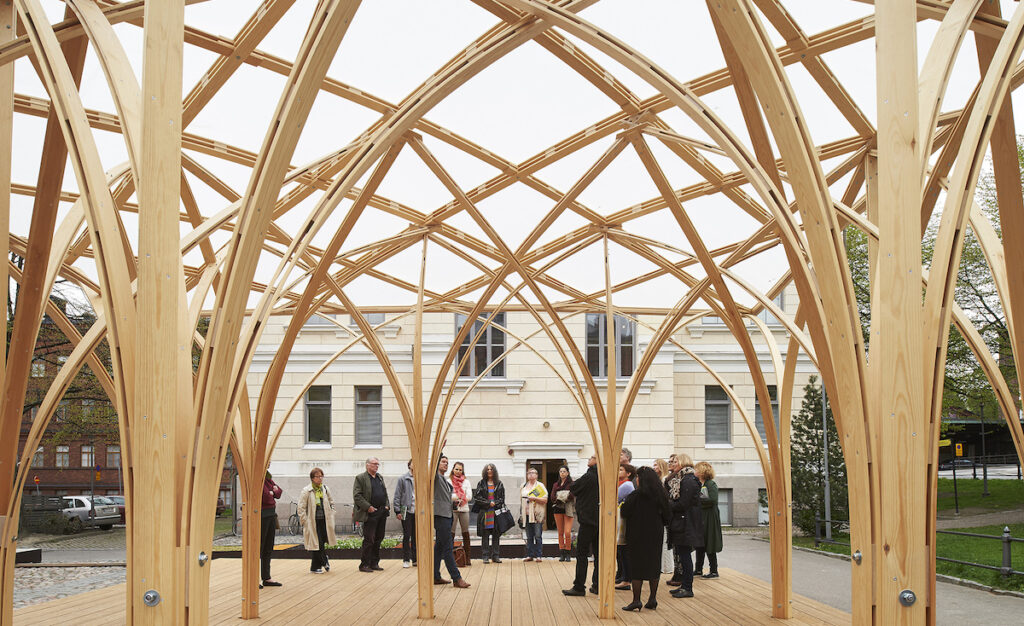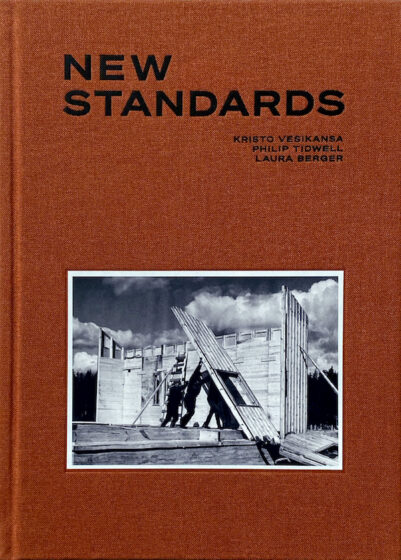Architecture welcomes Philip Tidwell, expert in wood construction, to faculty
The Department of Architecture is pleased to announce that designer, scholar, and educator Philip Tidwell is joining the department as assistant professor. Tidwell brings expertise in materiality, wood structures, and sustainable design to the College of Environmental Design.
The founding principal of Peripheral Projects, Tidwell joins the department at a pivotal moment, when explorations into new materials and methods, and the capabilities of wood in particular, are deepening.
“Philip’s explorations into new forms of wood construction can have a real impact on expanding sustainable building practices,” says Lisa Iwamoto, chair of the Department of Architecture. “With his arrival, the department has reached a critical mass of faculty who focus on wood, from the nano scale to the scale of forests, and on new construction technologies.”
What Can We Do With Wood?

Tidwell comes to Berkeley from McGill University’s Peter Guo-hua Fu School of Architecture; prior to that, he steered the renowned Wood Program at the Aalto University School of Arts, Design and Architecture in Helsinki for 10 years, working with small cohorts of post-professional students in design/build studios.
“I was always interested in fabrication growing up and that interest in a hands-on approach to design only deepened during my time in Finland,” says Tidwell.
Tidwell was born and raised in Central Kansas then headed to St. Louis for college, receiving his BA from Washington University’s School of Architecture. In St. Louis, he encountered Juhani Pallasmaa, a Finnish architecture professor. After graduation he earned a Fulbright Scholarship to study in Helsinki, where he also worked in Pallasmaa’s office.
As a design architect at Juhani Pallasmaa Architects, Tidwell was immersed in an ethos of materiality that, then and now, is often missing from U.S. pedagogy. Seventy-six percent of Finland’s surface area is covered by wood, leading Finnish design to center around the material. Out of necessity, Finnish design asks, “What can we do with wood?”
After two years in Pallasmaa’s office, Tidwell returned to the U.S. to complete his MArch at Princeton. But after graduating, he bucked trend and moved back to Finland to join the faculty at Aalto University. In Helsinki, Tidwell brought a critical perspective to his teaching, inflecting the practical curriculum with seminar courses in theory and history.
“I’ve always sought to bring these two kinds of knowledge together, to break down the division between design and construction,” Tidwell says.
The Promise of Prefabrication
Tidwell has published widely, authoring books, book chapters, and journal articles. His most recent research project, New Standards, draws on a long-buried archive to explore the postwar era of prefabricated housing.

Co-authored with two Finnish architectural historians, the project is both a book and a traveling exhibition that was first shown at the 2021 Venice Architecture Biennale. It focuses on Puutalo Oy, a Finnish industrial consortium that exported nearly 300,000 single-family houses as part of Finland’s postwar reconstruction efforts.
With wood as its primary resource, Finland’s housing industry became deeply involved in the postwar economy as prefabricated houses were exchanged for food and machinery. For example, Finland traded nearly 4,000 prefabricated houses with the nation of Colombia in exchange for coffee. Puutalo Oy also sent houses, in the form of panelized components, to Israel, Australia, Ukraine, and other regions facing housing shortages after World War II.
This previously untold architectural history has a bearing on today’s housing crisis. Puutalo Oy’s strategies of mass production led to innovative systems that were easy to assemble and offer a glimpse into the potentials of prefabrication.
As Tidwell notes, the methods of production and distribution pioneered by Puutalo were an early predecessor to industry practices that remain common today. Industrial manufacturing is now interwoven with the construction industry, from doors and windows to facades systems and interior components.
“Site-based building remains labor intensive and difficult to control,” Tidwell says. “Off-site construction is a critical part of any effort to realize sustainable development at scale. Prefabrication, in many forms, has to be a part of our housing future.”
From Forests to Housing

After spending much of his professional career in Finland, Montreal, and the East Coast, Tidwell is eager to discover new territory, both academic and natural.
Most familiar with the northern boreal forests of Europe and Canada, he is itching to explore the diverse forest landscapes of California, home to 33 million wooded acres.
Tidwell’s arrival in Berkeley is timely, as California turns its attention to its forests and their management. For decades, California policy moved away from logging, but in recent years, as temperatures have soared and drought conditions have worsened, unmanaged forests have contributed to wildfire risks.
Tidwell believes that California’s new strategy of forest management should reconsider the role of the wood industry and support the conditions for sustainable, wood-based building. It’s important, Tidwell says, to think of forests and housing within the same ecosystem.
“Architect’s often speak of place, but we must also expand our conception of time. Buildings, and the materials from which they are made, are connected to cycles of extraction, construction, decay and reuse. These operations are both asynchronous and ongoing, so they require that we take a broader view of design than we may be accustomed to.”
Tidwell is looking forward to joining Berkeley’s architecture faculty, especially at this moment, when there is a coalescing of multiple perspectives on wood.
“Students of architecture need a critical knowledge of materials, not only to limit the energy consumed by construction, but to be sure that what they build remains valuable for generations to come.” he says.